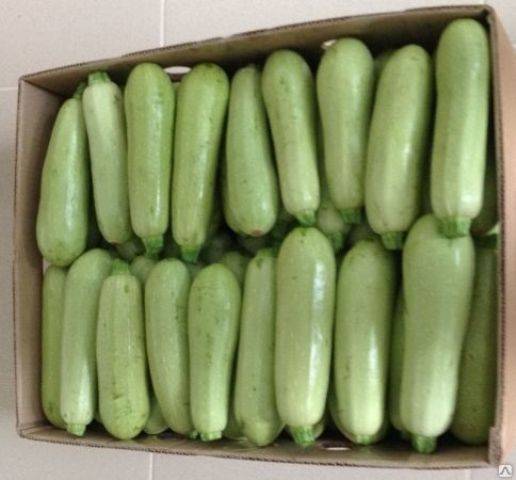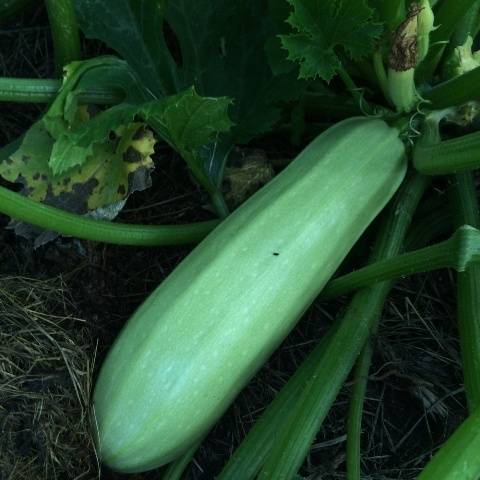Content
There is probably not a single summer resident in our country who has not grown zucchini on his plot. This plant is very popular among gardeners, as it produces early and abundant harvests and is easy to care for. In addition, if you select a variety or hybrid of zucchini that is fully adapted to growing in your climate zone, the yield will increase from year to year.
New varieties and hybrids of zucchini
Gardeners who grow vegetables every season know how intensively breeders work to develop new hybrids. Every year, varieties with higher yields, better taste and high resistance to diseases appear on the shelves of stores and markets.
Recent seasons have pleased gardeners with new early-ripening zucchini hybrids. These plants are classified as bush plants, and therefore can be placed in a garden or greenhouse more compactly, but the yield of each new hybrid is increased significantly. On average, each variety produces up to 10 kg of zucchini per bush. Moreover, today such results can be achieved even when growing seedlings in open ground on any soil.
Breeders pay great attention to the taste qualities of zucchini. Today's hybrids have a delicate taste, and the skin is so smooth and thin that you don't even need to peel the zucchini before eating.
The best early ripening varieties and hybrids
Growing early ripening zucchini is always a pleasure for the gardener. The best hybrids, bred by selection for greenhouses, greenhouses and open ground, grow literally before our eyes. By choosing a suitable, healthy variety, you can observe how the fruit grows up to 5-7 cm in height per day.
Early hybrids are exceptionally good for central Russia, the Urals and Siberia, where spring is late, cold and rainy. Zucchini in this area is grown in greenhouses or in open areas in the second stage (after early cucumbers or greens).
Iskander F1
Self-pollinating hybrid with early ripening. The fruits appear on the bush already on the 35-40th day after the first shoot. To obtain early harvests, it is better to grow Iskander in greenhouses and greenhouses. The length of one mature fruit can reach 15 cm, and the average weight is up to 250-300 g. This is one of the few hybrids that do not lose their presentation and taste, even if they stop growing.
Aral F1
Early self-pollinating hybrid. The plant is in the form of a bush without long vines. The growing season begins 40-45 days after the seed pecks. The fruits have a regular shape, but when outgrown they become like pears. Breeders developed Aral F1, completely adapting it to the cold climate of the Northern regions of Russia. It is also well resistant to high humidity, without the root and fruit rotting typical of other varieties. Productivity does not decrease even in rainy summers. Features of growing the Aral hybrid - it needs to be fed regularly. The average length of a ripe fruit is 15-17 cm.
Tsukesha
A beautiful early-ripening, productive variety of zucchini. The skin is thin, dark green in color with light green splashes. The growing season begins 40-45 days after the seeds hatch. Tsukesha is resistant to cold snaps in the air and soil, so it tolerates early planting of seedlings in open ground.
In addition, the fruits tolerate long-term storage and transportation without losing their presentation and taste. Distinctive features of the variety are high yield with regular feeding of zucchini with mineral fertilizers. The length of the fruit during the ripening period reaches 15-17 cm; 10-12 kg of vegetables are harvested from one bush.
Aliya F1
A self-pollinating hybrid that bears fruit already on the 45th day after planting the seeds. The fruits are light green, smooth, and medium-sized. During the ripening period, one zucchini grows to a size of 12-15 cm, with an average weight of 150-200 grams. Aliya is an ideal option for canning early harvests. If you follow all the rules of plant care and regular watering, the hybrid produces high yields. Up to 10 kg of fruits are harvested from one bush. Distinctive features of the fruit are resistance to strong winds, heavy rains and hail when planting zucchini in open ground. The stem and leaf recover quickly and tolerate pest invasion, downy mildew, powdery mildew, and root rot well.
Chaclun
The variety is early ripening with a long growing season and abundant, sustainable yields. The first fruits are harvested already on the 40th day after planting the planting material.Zucchini has a regular cylindrical shape, dense, rounded, but rarely grows more than 15-17 cm in length. A distinctive feature of the variety is that when it outgrows, the zucchini becomes like a pear and is covered with dense ribs. The plant is resistant to fungal diseases and sudden changes in temperature. Gives large yields both in greenhouses and greenhouses.
Ardendo 174
Early hybrids with dense, medium-sized fruits, excellent for canning. The growing season begins 40-45 days after the seeds hatch. The fruits are light, thin, during the ripening period the size does not exceed 12-14 cm, and the weight is 150-200 g. During the harvest period, up to 8-10 kg of zucchini are harvested from one bush.
Cavili F1
An early ripening hybrid with a growing season of up to two months. The fruits appear on the bush on the 35-40th day after planting the seeds in the ground. Zucchini is smooth, cylindrical in shape, light green in color. A distinctive feature of cultivation is regular feeding plants and pollination of seedlings.
Decorating your garden
Real gardeners are people who make every effort not only to ensure that there is a lot of harvest. They work tirelessly on their plots, trying to get exotic and beautiful fruits.
Here are just a few varieties and hybrids of zucchini, growing which you will get real aesthetic pleasure:
Orange miracle, Zolotinka and Golda
Here are three varieties that can become a bright and unforgettable decoration for any garden. The skin is painted bright orange, all fruits have an elongated shape. The length of one zucchini at full maturity reaches 12-15 cm, and the pulp is juicy and pleasant to the taste.
Sailor and Astoria
Two hybrids from the zucchini variety.Sailor is an amazingly beautiful elongated zucchini. It has dark green skin with bright longitudinal stripes. Astoria – dark green color, the skin is smooth and shiny. These are two more hybrids worthy of the attention of those who like to diversify the color scheme of their plot.
Boatswain
Round zucchini, resembling a small and unripe watermelon in appearance. The skin is dense, dark green in color. When fully ripe, one such zucchini can weigh up to 3 kilograms. Two or three fruits are enough to preserve a good batch for the winter squash caviar. The skin of the fruit is dense and ribbed, which makes it possible to harvest the crop fresh. Observing correct storage conditions, Botsman variety zucchini can be kept until the next harvest.
Video clip
A unique early ripening fruit. The growing season begins on the 35-40th day after the seed hatches. The weight of one zucchini during the ripening period reaches 0.8-1.2 kg. The fruits have a smooth oval shape, the skin is white, smooth and shiny. The pulp is medium dense, slightly sweet in taste. The appearance of the crop in the garden is very beautiful. One node can grow up to 4-5 ripe vegetables. The variety is excellent for cooking, caviar, stuffing and canning.
Ball
A rounded hybrid with pronounced stripes on a light green skin. The zucchini got its name from its longitudinal ribs. The variety is high-yielding. The fruits are small, ideal for stuffing. Up to 5 fruits are formed in one node, and they develop and ripen almost simultaneously.
Domestic selection develops and breeds new varieties and hybrids of zucchini every season in order to please summer residents both with the growing process itself and with an aesthetically beautiful and unusual appearance. When choosing planting material for growing, pay attention to the instructions on the package. Some hybrids require certain care, watering and feeding.
Features of growing bush hybrids
Bush hybrids are visually significantly different from conventional varieties, but this does not affect plant productivity. Seeds of bush hybrids can be planted for seedlings both in greenhouse conditions and in open ground. Bush hybrids of zucchini are distinguished by high productivity and resistance to possible spring cold snaps, so they feel very good in dachas and vegetable gardens in central Russia and Siberia.
However, despite the compactness and convenience of growing these varieties, gardeners should understand that if the seedlings are planted too close to each other, this may affect the yield of zucchini. Each bush hybrid has its own planting scheme, described in the instructions, but experienced gardeners recommend placing the plant so that one bush occupies about 1 m2. This area is necessary for the plant for the root system, which in zucchini grows in breadth and not in depth. Proper watering and compliance with all growing standards will give you the opportunity to obtain large and abundant harvests.
Seedlings or seeds of bush hybrids are not recommended to be planted in acidic soils, although many varieties have been bred for any soil and soil.The fact is that zucchini, being in an acidic or slightly alkaline environment, becomes bitter. It also loses its taste with insufficient watering.
Almost all planting material prepared by breeders undergoes pre-treatment and does not require disinfection or hardening. But those gardeners who have been growing zucchini for many years still recommend keeping the seeds in a weak solution of potassium permanganate before sowing.
Seedlings of bush hybrids are planted in open ground after 3-4 leaves appear on them. Immediately before planting, the soil must be fertilized with organic and mineral fertilizers.
Watch an interesting video about the new exotic hybrid Spaghetti squash:
























